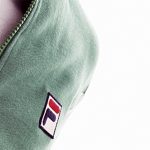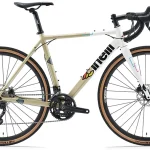Ten years after its inception, online retailing is growing up fast. According to The State of Retailing Online 8.0, an annual Shop.org study conducted by Forrester Research of 137 retailers, 2004 online sales rose 23.8% to $141.4 billion. Excluding travel, online retail sales also rose 23.8% to $89.0 billion, representing 4.6% of total retail sales.*
The report predicts that online sales (including travel) will rise 22.0% to $172.4 billion this year. Sales excluding travel are expected to reach $109.6 billion.
Women's Retail Categories Poised for Growth
Several retail categories will experience steep growth this year, largely due to the growing acceptance of online shopping by women. In fact, categories with products purchased largely by women will see the most growth this year. Online sales of cosmetics and fragrances are expected to grow 33% while sales of over-the-counter medications and personal care will rise 32%. Additionally, sales of jewelry and luxury goods (31%) and flowers, cards, and gifts (30%) are expected to rise dramatically.
“Though initially adopted by men as a shopping tool, women are flocking to the Internet in droves to comparison shop, research, and buy,” said Scott Silverman, executive director of Shop.org. “Online retailers who sell products that are purchased by women are in a favorable position this year, as we expect those categories to grow substantially.”
In addition, several categories are expected to receive at least ten percent of their sector's sales from the Internet this year, including: computer hardware and software (48%), tickets (28%), travel (26%), books (20%), consumer electronics (13%), cosmetics and fragrances (12%), toys and video games (12%), and flowers, cards, and gifts (10%). This year, a total of 13 categories will reach the five-percent penetration point.
Profitability Continues to Climb
Multichannel retailers again posted record profitability last year. Last year, online retailers improved overall operating margins to 28% from 21% in 2003. Catalog-based retailers continue to boast the best operating margins, which rose to 32% last year from 28% in 2003.
“With profitability behind them, retailers can now focus on innovation and growth through things like increased integration of their online and offline businesses and internationalization of their sites,” said Carrie Johnson, lead author of the report and Principal Analyst at Forrester Research. “One way retailers will grow sales over the next several years will be by launching country-specific sites and operations to accommodate a growing number of international customers.”
Online Retailers Find Search Engine Marketing Pays Off
One of the most compelling findings of the study addressed retailers' marketing budgets and the effectiveness in marketing through certain channels. This year, search engine marketing appeared as the clear leader as a source of new customers, with retailers reporting that search engine marketing delivered 43% of overall customers to their sites. In 2004, 87% of retailers who participated in the study used pay-for-performance search placement and spent more than twice as much from their marketing budgets on this category than they did in 2003 ($877,630 in 2004 vs. $399,923 in 2003).
Multichannel Retailing Advances
According to the study, retailers are keenly aware of the importance that their website plays into their overall sales goals. In fact, retailers reported that the Web influenced 20% of in-store sales. As a result, retailers are striving to integrate their stores and websites, which signals cooperation among channels.
Last year, almost all (92%) multichannel retailers included URLs on in-store materials, up from just 77 percent in 2003. The majority of retailers (81%) also used websites to tout their stores. Additionally, 45% allowed consumers to purchase and redeem gift cards online and in stores, up from 30% in 2003. And nearly one-fourth (24%) of retailers offered in-store product availability on their websites last year.
* “Retail Sales” exclude travel and include the following categories: sporting goods and equipment; flowers, cards, and gifts; health and beauty; consumer electronics; other (subscriptions, art, and collectibles); apparel; jewelry and luxury goods; home; food and beverage; books; tickets; computer hardware and software; music and video; toys and video games; auctions; auto and auto parts. These are not the same categories that the National Retail Federation tracks; therefore, the numbers are not comparable.















